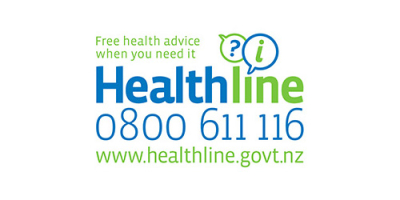The enduring spirit of humanity in healthcare: what happened when AT&R flexed to include a COVID ward
The AT&R ward is homey. Unlike anywhere else in the hospital, the hallways are carpeted. Across from reception— which usually boasts a large bouquet of gifted flowers— a fish tank glows, producing an aquatic hum. There is a dining room and a lounge and a hush that feels peaceful and unhurried.
AT&R stands for Assessment, Treatment, and Rehab. Lisa Turner, the ward’s Charge Nurse Manager, explains that the service rehabilitates people who have come into hospital after an acute life event and need more time before returning to the community.
“We see about 25% of the stroke patients that come through the hospital,” Lisa says. “We see people who have broken their hips, pelvis, or upper arms. New amputees who need to learn how to transfer to wheelchairs or walk on a prosthetic leg. People who have been deconditioned after a long time in hospital, for example after pneumonia. We’ll try and strengthen them up.

CNM Lisa Turner (in dark blue) and her AT&R nursing team in March 2022
“Most of our patients are over 65, but we get some younger people as well. You want to make sure they are as good as you can get them before you send them out. So people are definitely up and dressed from day one and we encourage them to do as much as they can for themselves, while teaching them techniques on how to conserve energy.”
The average length of stay is two weeks, but some patients can stay for a handful of months, hence the homeliness - the lilac carpet, the dining room, the fish tank (maintained by donations)— but also the beloved volunteers.
“We would have a lady who we would affectionately call ‘Mrs. Toast.’ She used to come in five days a week. The patients would order bread and she would go around with a little trolley and make hot toast for them.
“She is a very big, bright, and loud person, brought a little bit of joy to the patients. Also, it was nice that she was not a nurse, a doctor, or a therapist, who was making them do stuff that they might find challenging. She’d just sit and have a chat with people.”
As a result of the pandemic volunteers, like Mrs. Toast, or the Association who brought service dogs to the patients once a week for pet therapy, were no longer able to come into the ward and patients could not congregate in the lounge or dining room. Comparatively small sacrifices, but no less significant in the daily lives of those impacted.
The pandemic not only changed these elements of AT&R, it also changed the unit’s structure. Since 2020 AT&R has operated in a mixed model ward, meaning one wing has been converted to isolate and care for COVID-19 patients while the rest of the ward remains business as usual. Twice, AT&R has moved from a mixed model and flexed to become fully a COVID ward when required.
“I think I went home on a Friday afternoon and come Monday morning we were 100% full of isolation. Every single room,” Lisa says of the Omicron peak. “Eighteen COVID patients and two flu patients.”
The first time AT&R converted to be a fully COVID ward, AT&R patients were repatriated to the medical unit. The next time they went to a surgical ward.
Shifts like these are carefully considered balancing acts, intended to prioritise safety and provide the best outcome possible for patients under difficult circumstances. The AT&R ward was chosen for a variety of reasons, particularly its location within the hospital on the ground floor.
The inclusion of COVID-positive patients in the AT&R ward presented both challenges and new opportunities for the nursing staff. In addition to the patients that came into the COVID ward purely for COVID-related reasons, there were also COVID-positive patients who transferred in from other specialties. Patients who were transferred from surgery, obstetrics, mental health, and haemodialysis required “quite a diverse skillset to be available,” Lisa says. While nurses from dialysis cared for their patients within the COVID ward, acute care mental health clinicians, physicians and surgeons managed their patients and the AT&R nursing staff acted under their guidance.
Lisa explains that, “everyone has their focus that they like with nursing,” so while the AT&R nurses certainly had the diverse skillset needed to care for the patients that came into the ward, there were situations that were opportunities for upskilling.
For example, a COVID-positive patient recovering from surgery required a type of pain management called ‘patient controlled analgesia,’ or PCA. For this AT&R would typically have to send the patient to ICU, a considerable undertaking from an infection prevention, nursing staff and bed capacity perspective.
“I thought okay, we need to address that because we cannot be filling up an ICU bed and then having to run a split unit [to maintain isolation]. So I said to the staff, ‘right! We’re going to do some education. Everyone do their e-learning. You’ve got until Wednesday.’ It was Friday.”
The AT&R nursing staff rose to Lisa’s challenge. They completed the e-learning and the clinical just in time: a patient requiring PCA arrived the very next day after the education, “unplanned, of course,” Lisa adds.
“Overall the team has done exceptionally well. They have just jumped at the opportunity to gain extra skills along the way but they have not lost their rehab skills.”
Lisa says that with a high vaccination rate and hospitalisation rates lower than predicted, the COVID ward was not “what you might see on TV.” Most of the patients stayed on the ward and did not require ICU or ventilators. However, there were hardships that should not go unacknowledged, including many deaths.
“In their workload the nurses might have a medical patient, a surgical patient, and then they might have someone who is dying. We have had a lot of deaths. The patients we get now tend to be quite complex. They’re old, they’re frail, and they’ve got either end stage cancer, or they have had chemotherapy and some of the medications they give for chemo means that they cannot clear COVID. They’ve had medication to dampen their immune systems because of the cancer, but that same response blocks their bodies’ ability to fight COVID even if they have had four vaccinations. We have had people on the ward who have been here 6 weeks and not cleared COVID.
“The team is dealing with everything very well. I have to say I am very proud,” Lisa says.
Beyond the medical scope, the team have been doing the unexpected and the atypical, as the very basics of caring for patients have to be re-worked in the midst of a pandemic, down to the smallest details of everyday living. Such as: the water jugs patients typically keep in their room. With the risk of spreading infection, water jugs could no longer be passed between the patient’s room and the water cooler. To reduce the risk, COVID patients are given water bottles. The solution is a necessary sacrifice—for the planet, but also for Lisa’s office, crowded with boxes of bottled water.
More significantly, “when you go in and out of each room you have to change in and out of your PPE each time – every time you go in the room.” In times when the AT&R ward was operating as a full COVID ward– 20 patients – this contributed to a “massive workload.”
To ease the workload, patients were supplied with iPads (in addition to the standard call bell) to communicate their needs and make each time in and out of the PPE result in a visit that was as productive as possible.
“I think people would be surprised at what is being managed down here.” Including the effort the team makes to deliver meals as quickly as possible without the aid of a meal trolley. Similarly to the water jug, the trolley could not enter the ward if it would be returning back to the hospital kitchen, which presented a challenge in passing out meals.
“If you don’t get it out fairly quickly the food is cold by the time it gets to the patients, which is not very nice for people who are not feeling well anyway,” Lisa says – a sentiment that speaks volumes about the way she thinks of patient care. To Lisa and the AT&R staff, simple pleasures like warm meals are not a nicety or a second thought: they are a part of a whole-person approach to care, recovery, and rehabilitation.
As with all wards, caring for the whole person involves staff from a wide array of disciplines and fields of work.
“The wider team has worked really hard,” Lisa says.
She extends her deep gratitude to the household staff, who followed in-depth cleaning protocols within the COVID ward on top of their normal cleaning duties. She also acknowledges the Allied Health Therapists for their ability to remain resilient and adaptable when a full COVID ward meant their patients were relocated, and as a result, so was their place of work. Equally the Vulnerable Health staff who followed COVID-positive patients to the ward.
“You can imagine what it’s like – you’re normally in your own team which is like your little family and suddenly you are just picked up.”
Amid the change and the sense of being somewhat cut off from the rest of the hospital, Lisa says she has treasured the morning teas she shared with her CNM colleagues and knows that others worked hard to stay connected virtually until they could work together in the same place again.
For the foreseeable future, the AT&R ward will continue as a mixed model ward, reserving six beds for COVID patients, as well for recently recovered patients who are at low-risk of reinfection. This way, other wards do not have to close off entire wings and lose beds if a patient develops COVID, and of course, there is an established provision for people in the community who require hospital-level care.
Having risen to the occasion, the AT&R nursing team are happy to continue in a mixed model. Lisa says that the feedback she has received is that they felt professionally fulfilled by the blend of acute work with the rehab work, as well as the time rehab allows them to spend with patients.
They are, however, very ready for a well-deserved holiday. As the pandemic recedes, Lisa’s team, many of whom are from overseas, are looking forward to going home to spend time with family.
For her part, Lisa is looking forward to the eventual day when things like communal dining and volunteers return to AT&R. Sadly, the Mrs. Toast will not be returning.
“I know we won’t get Mrs. Toast back because she’s since gone on and gotten a job!” Lisa says with a laugh.
They’ll be tough shoes to fill, but hopefully there will be a Mrs. or a Mr. Toast in the future.





